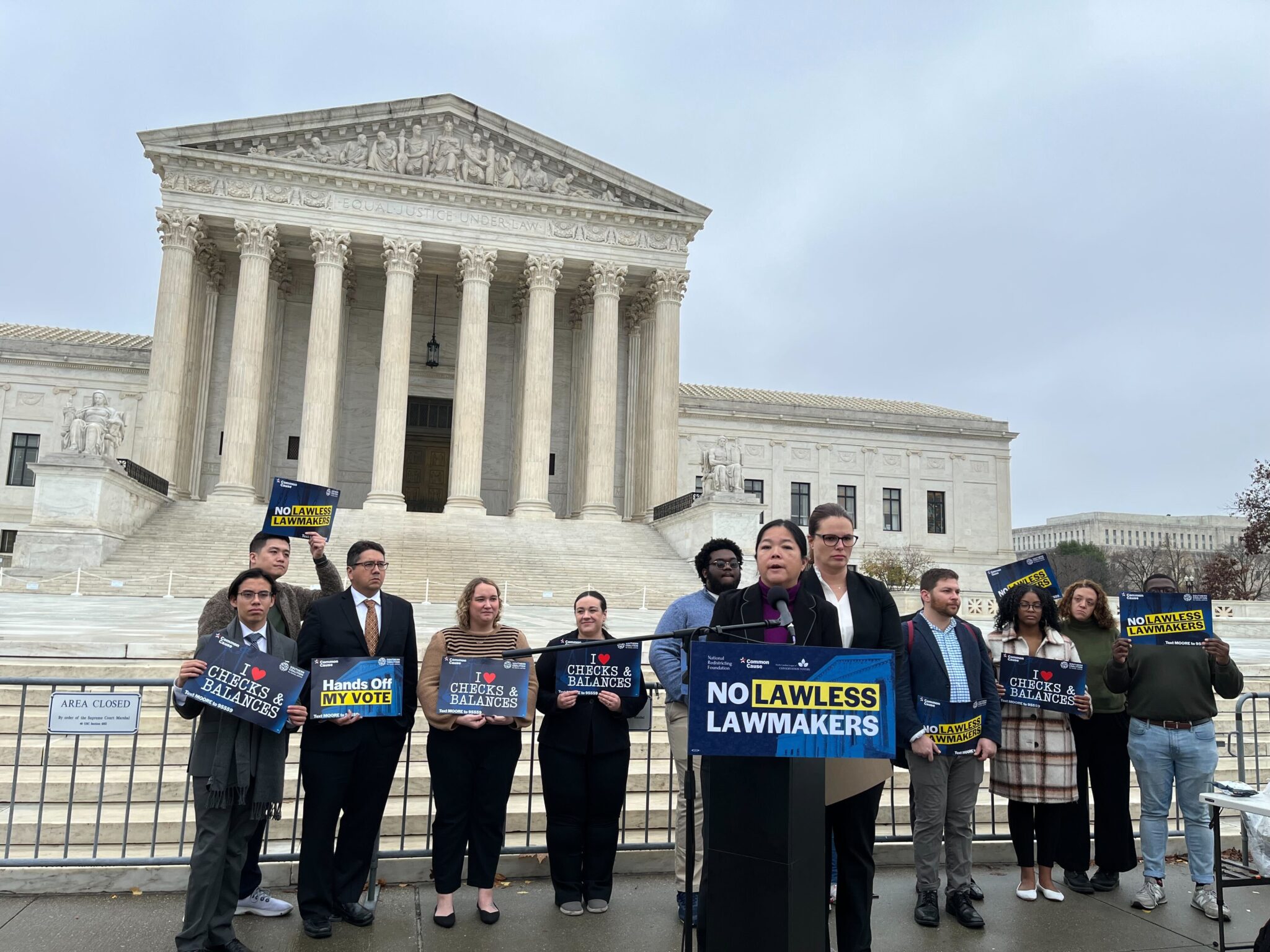Press Release
Common Cause Hails Ohio Legislature’s Support for Non-Partisan Redistricting
Ohio lawmakers joined a national drive for fair, non-partisan redistricting today, asking state voters to adopt a Common Cause-backed plan requiring that statehouse districts reflect Ohioans’ voting patterns.
“The Ohio legislature has given voters a historic opportunity to create a system for drawing General Assembly districts that prioritize fair representation and transparency over partisanship,” said Kathay Feng, Common Cause’s national redistricting director. “We will work hard to make sure this reform passes in Ohio next November and keep up the fight for reform in states like Illinois, Indiana, Maryland, North Carolina, Pennsylvania, and across the country.”
The measure, which will appear on Ohio ballots next November, directs the legislature’s mapmakers to avoid splitting cities and counties as they fashion legislative districts. It also would require that districts reflect state voting patterns, so that each party could expect to claim a percentage of seats roughly equal to the percentage of votes received by its candidates.
“This reform is truly bipartisan and now it is up to the voters,” said Catherine Turcer, policy analyst for Common Cause Ohio. “We remain committed to giving voters a fair say in Congressional races as well, and we hope the spirit of bipartisan compromise demonstrated by Ohio leaders this month will lead to additional reforms in the future.”
This will be the fourth ballot measure on redistricting sent to Ohio voters since 1980. While the 1981, 2005 and 2012 ballot measures approached redistricting reform differently, each was opposed by at least one political party and failed to garner voter support. This is the first time that members of both major parties have cooperated on a reform plan for state legislative district lines, Turcer said.
Turcer said popular support for redistricting reform in Ohio has been growing steadily, pushed along by factors including lobbying by Common Cause and other reform organizations and the vocal backing of Secretary of State Jon Husted. A state Constitutional Modernization Commission has been reviewing redistricting reform options for two years, she added.
Because Ohio is a swing state, where today’s majority may find itself in the minority after the next election, Democratic and Republican partisans also may be more attracted than before to a redistricting process which promises each side representation equivalent to its voter support, Feng suggested.
Six states – Alaska, Arizona, California, Idaho, Montana and Washington – have created independent citizen commissions to handle redistricting, effectively taking partisan considerations out of the decision-making. While the Ohio plan would let a commission composed of state lawmakers continue to draw districts, it bars them from fashioning districts designed to create a partisan advantage.
Seven states – Arkansas, Colorado, Hawaii, Missouri, New Jersey, Ohio and Pennsylvania – use partisan panels like Ohio’s to draw districts. Of those states, only Missouri requires at least one member of the minority party to agree to the new districts.
Over the past century, 102 of the 105 proposed changes to the Ohio Constitution referred by the state legislature have been approved by the voters.
